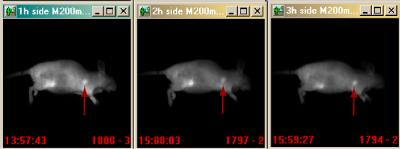- Index
- >EU funded projects
- >LYMPHOTARG (2010-2013)
Coordinator : Pr. Maria José ALONSO FERNANDEZ
Cancer is one of the leading causes of death and one of the pathologies with highest social impact in western world. It is now generally accepted that the process of metastasis is the major cause of death in cancer patients with solid tumors, mainly because of the ineffectiveness of current therapies once tumor cells spread and metastases begin to form. Indeed, inhibiting cancer cell invasion and metastasis has become a top-priority in cancer research. In this context, recent studies have shown the importance of the lymphatic system in the process of cancer cell dispersion.
Herein, we propose a multidisciplinary strategy combining nanotechnology and biomedicine for the development of anticancer treatments targeted specifically to the lymphatic nodes. Taking advantage of the ability of selected nanoparticles to localize to the lymph nodes, we plan to deliver drugs and immunostimulating complexes to this compartment, preventing the process of metastatic spreading through lymphatic vessels. In the present proposal we aim at reaching an advanced preclinical evaluation stage of these novel nanocarriers systems. This aim requires an integrated and multidisciplinar working plan, together with a highly coordinated action of clinical and academic participants as proposed within the frame of the present international consortium.
The ultimate aim of this project is to design new treatments for suppressing cell spreading in metastatic cancers. As the lymphatic system is a major route for the spreading of metastatic cancer cells and also a major localization for immunocompetent cells, we propose the design of targeted nanocarriers capable of delivering cytotoxic drugs and tumor antigens selectively to the lymphatic system.
Specific objectives of the project include:
1. Design and characterization of several nanocarrier prototypes showing lymphotropic characteristics upon intravenous administration. These nanocarriers should be capable of loading hydrophobic agents (antitumoral drugs and contrast agents) and deliver them in a controlled manner. Additionally, their structure will have different levels of complexity, namely:
- They are small (100 nm or less) and sterically stabilized, so that they are able to circulate in the blood circulation and extravasate to the lymphatics. These nanocarriers will be called LYMPHOCARRIERS
- They associate immunostimulating constructs capable of inducing effective antitumoral cellular responses. These nanocarriers will be called IMMUNO LYMPHOCARRIERS
- They are decorated with antibodies against metastatic cell markers (e.g. CXCR4). These cell-targeted nanocarriers will be called TARGETED LYMPHOCARRIERS

Accumulation of LYMPHOCARRIERS in lymph node after IV injection in mouse as a function of time
Accumulation of blank PEG-coated lipid nanocapsules (“LYMPHOCARRIERS”) in lymph node after IV injection in mouse as a function of time (Fluorescence Reflectance Imaging made in collaboration with INSERM U 823, Grenoble, France- Dr Jean-Luc Coll).
2. Proof-of-principle of the nanocarriers in advanced 2D and 3D in vitro cell models. The proof of principle will be established with regard to the capacity of the nanocarriers to accumulate into the cancer cells (using fluorescent and radioactive markers) and also with regard to their effectiveness in terms of killing the cancer cells as well as reduce their metastatic ability.
3. Proof-of-principle of the nanocarriers in tumor-bearing animal models. The proof of principle will be established with regard to the biodistribution of the nanocarriers and their capacity to target and accumulate in the metastatic cells within the lymphatic system and also with regard to their efficacy in terms of reducing the tumor load and metastatic spread.


